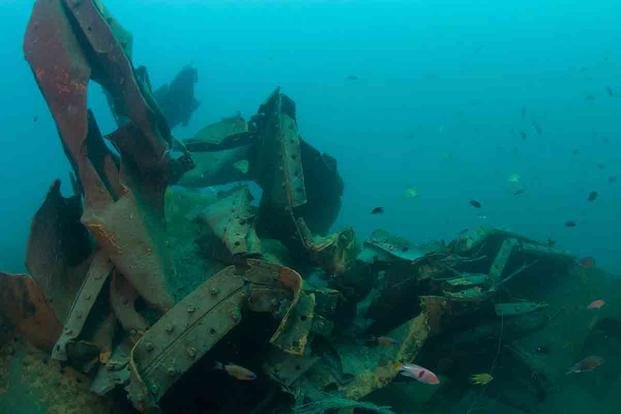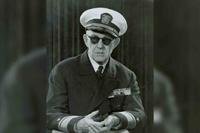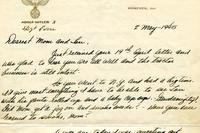In 2017, a civilian search team discovered the wreck of the USS Indianapolis in a 600-mile swathe of the Pacific Ocean. The 10,000-ton heavy cruiser was sunk by two torpedoes in the Philippine Sea in July 1945. Though the wreck was finally found, its location was kept a secret because it was the tomb of an estimated 300 American sailors.
The story of the Indianapolis is much more tragic than just its sinking, and such a storied ship and crew deserve to be honored and memorialized. But some who discover wrecks like these tend to have a "finder's keepers" mentality about what's lying on the ocean floor. Many turn out to be treasure hunters or scrappers, according to National Geographic.
Their most recent treasure isn't gold or silver, but steel from wrecked warships -- and some salvagers are willing to desecrate the underwater tombs of war dead to get it.
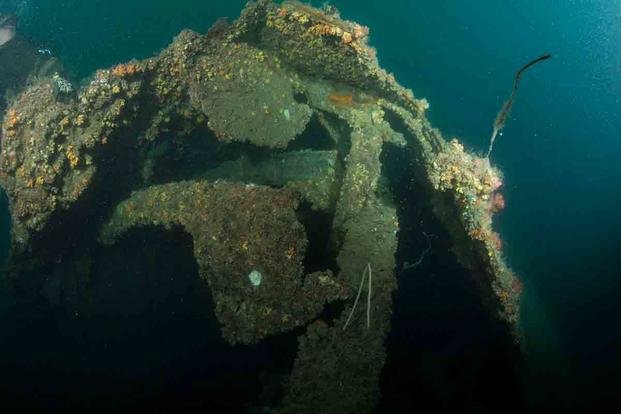
There's a particular reason why the steel of sunken warships is so valuable. All the steel produced after World War II was irreversibly irradiated with radioactive cobalt isotopes during the process of mixing iron and carbon as an unexpected consequence of global atomic testing. As a result, nuclear fallout has been a part of all steel made after the Atomic Era. Steel made before World War II is now known as "low-background steel" and is usually found in old shipwrecks, artillery shells and other wartime materiel.
This background radiation isn't dangerous, and it doesn't really change how we make or use steel -- unless that steel is used to make things that are sensitive to radiation, such as certain scientific and medical equipment. Its use in medicine and high-tech research, along with its limited supply, means low-background steel is exceptionally valuable -- and like all things with such a high value, some aren't too concerned about where they get it.
There's nothing inherently wrong with using old shipwrecks, which has long been a major source of this kind of steel (the exception is warships and submarines, which only the government of the flagged vessel can legally salvage due to espionage concerns). Shipwrecks within a nation's territorial waters are governed by those nations. The estimated 6,000 World War II wrecks should be protected by existing legislation, but enforcement can be difficult.
It's not known exactly when the practice began (it's different for each newly discovered wreck), but illegal scrappers are responsible for stealing steel from wrecks that are actually the final resting places of thousands of World War II-era service members. A 2017 report from The Guardian notes that warships containing the corpses of 4,500 troops may have been destroyed in the hunt for valuable low-background steel
In the Pacific Ocean alone, there are an estimated 13 million tons of sunken warships, with potentially tens of thousands of war dead entombed inside. Analysts have discovered that at least 40 of these sunken vessels, which are also the graves of British, American, Australian, Dutch and Japanese troops, have been disturbed in the hunt for low--background steel.
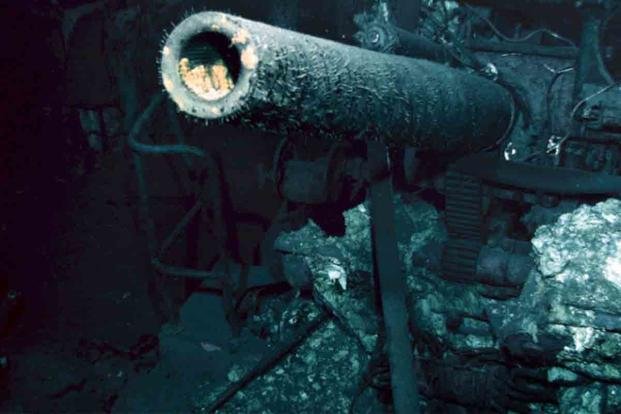
Illegal scrap metal divers have ripped apart three Dutch and three British ships that were first discovered in 2002 off the coast of Indonesia. An American submarine wreck, the USS Perch, had also disappeared. Although the American sailors were captured by the Japanese, hundreds of Dutch and British sailors were thought to be in the wrecks. Similar losses have been reported off the coasts of Malaysia and Borneo.
In 2018, the remains of 300 sailors who died aboard Australia's famed light cruiser HMAS Perth were found to be "devastated" after scrappers illegally salvaged an estimated 60%-70% of the wreck. Perth was sunk by the Japanese in 1942, taking 353 men down with it. It was discovered in 1967, but by 2013, scrappers had begun stealing its superstructure, turrets and armor plating.
Salvaging these ships is usually done using crane-equipped barges and explosives, with little thought toward the men entombed inside. They also leave the unmistakable evidence of salvage, causing damage that could not have been done by enemy weapons. Plenty of legislation to protect these sites already exists, but actually implementing it depends on cooperation between the countries where the vessels lay and the state that created the ships.

As the equipment used to legally salvage ships from the bottom of the ocean improves, the danger to Pacific shipwrecks will only increase. Vessels protected by the depths may soon lose that protection unless countries that control the territorial waters begin protecting these historic sites.
Want to Learn More About Military Life?
Whether you're thinking of joining the military, looking for post-military careers or keeping up with military life and benefits, Military.com has you covered. Subscribe to Military.com to have military news, updates and resources delivered directly to your inbox.
